Acne: It’s the most common skin condition in the United States, affecting up to 50 million Americans every year. That’s a lot of pimples.
Anyone who has experienced a breakout knows that everyone, from well-meaning aunts to citizens of the internet, has a different opinion on the best treatments they “swear by.” It’s no wonder wading through the deluge of options feels exhausting — and dabbed with skepticism.
So we’re here to help armor your skin with expert-informed advice on the best treatments for acne. We’ll even make braving the skin care aisle easier with tips and product recs from dermatologists. Let’s journey through all the pimple possibilities together.
The best acne treatments
- Best splurge: Marie Veronique Intensive Repair Serum
- Best over the counter: Differin Adapalene Gel 0.1% Acne Treatment
- Best drugstore acne treatment: La Roche-Posay Effaclar Duo Dual Acne Treatment with Benzoyl Peroxide
- Best for oily skin: Paula’s Choice Skin Perfecting 2% BHA Liquid Exfoliant
- Best for sensitive skin: Makeup Artist’s Choice Mandelic Acid Toner
- Best acne treatment mask: Face Theory Pink Clay AHA Face Mask MK1
- Best acne treatment with niacinamide: Paula’s Choice Niacinamide Booster
- Best acne treatment cleanser: Marie Veronique Treatment Cleanser
- Best budget acne treatment: The Ordinary Azelaic Acid Suspension 10%
- Best acne treatment for dry skin: The Ordinary Lactic Acid 10% + HA 2% Exfoliating Serum
- Best acne treatment for back and body: CeraVe Renewing SA Cleanser
- Best spot acne treatment with sulfur: Face Reality Sulfur Spot Treatment
- Best spot acne treatment with benzoyl peroxide: Kate Somerville Anti-Bac Acne Clearing Lotion
- Best prescription antibiotic acne treatment: Clindamycin
- Best prescription retinoid: Tazarotene
- Best for teenagers: Hers Custom Acne Treatment for Teens
- Best for skin prone to scarring: Starface Hydro-Stars
- Best drugstore: CeraVe Resurfacing Retinol Serum
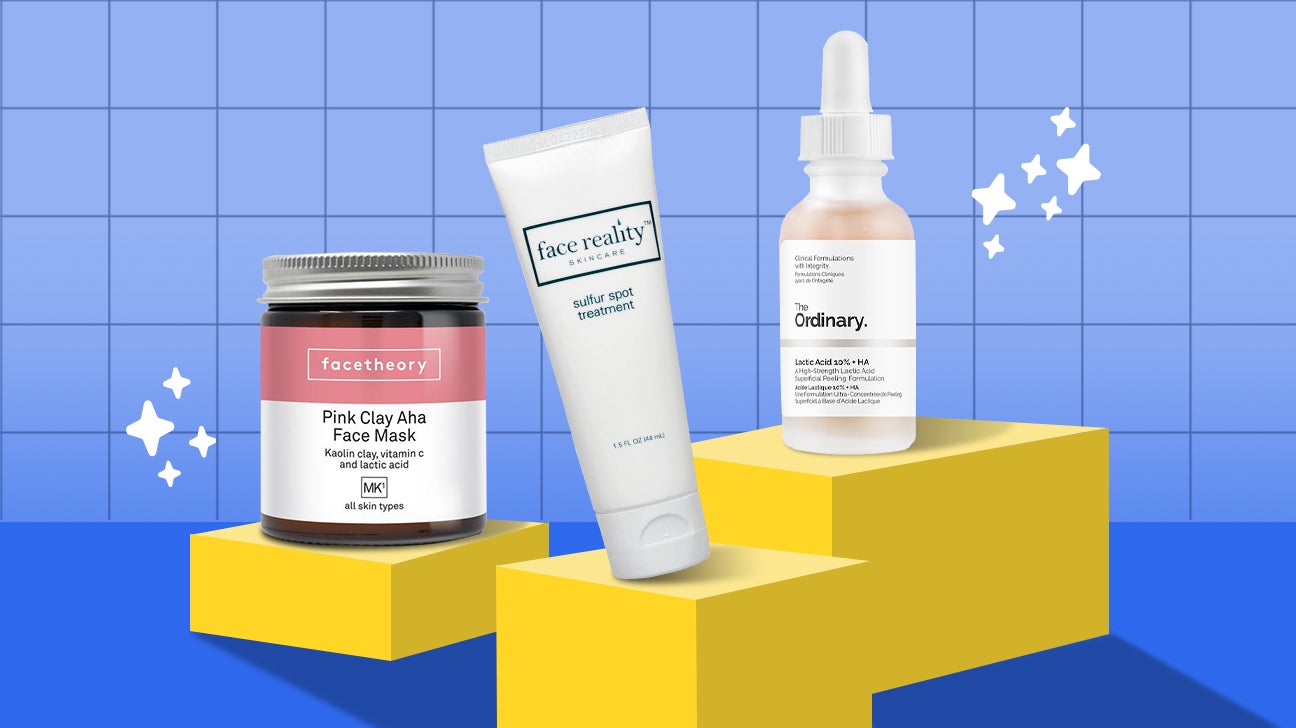
How to choose the best acne treatment for you
Determine what type of acne you have
Figuring out which type of acne you’re dealing with will help you pick your fighter.
Dr. Stacy Chimento, a board-certified dermatologist in Miami, says acne can range from mild whiteheads to severe cystic acne. She generously built us this crash course in zit-ology:
Comedonal acne
Also called mild noninflammatory acne, comedonal acne consists of:
- Whiteheads are minor blemishes with white “heads” that pop up on the skin’s surface. Sometimes these guys are called comedones, and they can happen when hair follicles become clogged with oil and dead skin cells. Whiteheads, Chimento says, also cause pores to stay closed at the surface of the skin, which is another reason it appears to have a white head.
- Blackheads are blemishes that look like tiny black dots. They can also be considered comedones but are open at the surface of the skin.
Mild inflammatory acne
A step above comedonal acne, mild inflammatory acne includes whiteheads, blackheads, plus a small amount of the following:
- Papules are the step above whiteheads. Chimento says these become inflamed and infected, are usually very sensitive to touch, and are basically just hard clogged pores. Papules will annoyingly leave your skin with a pink or red look.
- Pustules are also a step above whiteheads, but these ones have yellow or white pus that can be seen on the skin’s surface — which is why Chimento says they are often mistaken for whiteheads. One way to tell them apart is by looking for red surrounding the white or yellow head on the skin’s surface. Pustules are also very tender to the touch and painful (owie).
Moderate inflammatory acne
This kind of acne includes everything we’ve already covered — except you’ll usually have a higher number of papules and pustules. You’ll also see a few of the these guys:
- Nodules are the large and inflamed bumps that are firm to the touch, deep within the skin, and very painful, Chimento says. Moderate inflammatory acne usually only includes a few of these — you’ll typically see more of these with severe acne.
Severe inflammatory acne
Severe acne can last for months and usually loves to spread quickly. Severe acne includes everything we’ve already covered — with each type of lesion arriving in multiples — plus a few additions:
- Cysts (one of the most famous types of acne) are pus-filled lesions that look similar to boils. Chimento explains these usually happen after infections and are more likely than any other acne to scar.
- Acne conglobata is a highly inflammatory condition, mostly affecting men associated with steroids or testosterone. “It involves several inflamed nodules that are connected underneath the skin. Most patients develop symptoms between 18 to 30 years of age, appearing on the neck, chest, back, and arms,” Chimento says.
Find the best ingredients for your acne type
When it comes to over-the-counter products (OTC) — plus a couple of prescription options we snuck in here — these are the ingredients that are most effective for mild to manageable acne breakouts.
| Ingredient | Results | Acne type |
|---|---|---|
| alpha hydroxy acids (AHAs — like glycolic and lactic acid) | These guys may prevent acne, unclog pores, and reduce hyperpigmentation by removing dead skin cells and reducing inflammation. | comedonal |
| azelaic acid | This ingredient helps reduce acne *and* post-acne hyperpigmentation. It’s also a good pick for people with rosacea. | mild, moderate, and severe inflammatory acne |
| beta hydroxy acid (BHA — like salicylic acid) | A bad B that can reduce acne by reducing oil and inflammation. | comedonal |
| benzoyl peroxide | A reliable (but strong AF) active ingredient that kills the bacteria that causes acne. | mild and moderate inflammatory acne |
| clindamycin | A topical antibiotic that can help treat inflammatory acne. | mild and moderate inflammatory acne |
| niacinamide | An ingredient commonly found in lotions and serums, it can regulate oil production, reduce inflammation and redness associated with acne, and reduce appearance of pores. | comedonal and moderate inflammatory acne |
| retinoids (tretinoin and adapalene) | Available in OTC and prescription strengths, the FDA has approved certain retinoids (like adapalene) for the treatment of acne. | comedonal, mild, and moderate inflammatory acne |
| sulfa-based products | This ingredient can help reduce inflammatory lesions, comedones, and oil production. | comedonal, mild, and moderate inflammatory |
| zinc | An anti-inflammatory that reduces the bacteria that causes acne and suppresses sebum production. | comedonal, mild, and moderate inflammatory |
tl;dr: Most ingredients aim to kill bacteria and clear up pesky dead skin cells, but your mileage may vary depending on the ingredient. Plus, your skin type will dictate which to choose to help you avoid harsh side effects like dryness or excess oil.
Consider your skin type, too
We know — taking your acne *and* skin type into consideration can be a drag. But if you want to avoid side effects like irritation and peeling, you’re gonna want to pay attention to this.
- Most skin types. Chimento says Benzoyl peroxide is well-tolerated by most skin types. She does warn to be careful with the amount of this active ingredient, saying less is more. “You only need about 2.5% for it to work. Results may take a few days to begin showing.”
- Oily skin. Salicylic acid helps prevent pores from getting clogged. “Salicylic acid is usually used to aid oily skin, control oil production, and reduce acne breakouts,” Chimento says. Sulfur is another helpful ingredient for oily skin. Chimento points out that it helps to remove dead skin cells that clog pores and removes excess oil. Another tip for oily babes: avoid alcohol-based products. “These can increase oil production and affect your skin barrier. Make sure to reach for products that read ‘oil-free’ and ‘noncomedogenic,'” Chimento says.
- Dry skin. Basically your job is to steer clear of ingredients that are too drying for already dry skin — like salicylic acid. Dry skin types tend to tolerate sulfur-based products best because they’re slightly less drying. In general, you should START SLOW to help your skin build up a tolerance to your treatments. That means only using them a couple times a week at first.
- Combination skin. Chimento suggests combo skin peeps look for products with hyaluronic acid. “It both hydrates the skin and smooths the appearance of fine lines without layering on too greasy.”
- Textured, mature skin. As Chimento points out, AHAs (namely glycolic acid and lactic acid) reduce acne by removing dead skin cells and reducing inflammation. They’re also pretty bomb at smoothing out textured skin.
How we chose our products
We know it’s easy to get lost in the sauce with all the billions of acne treatments available. We needed some type of strategy to show you the best ones, here’s how we did that.
We considered stuff like:
- Active ingredients. We played favorites with formulas that use well-established, helpful, safe ingredients for addressing acne. (We consulted the derms on these.)
- Skin and zit type. What works for us may not work for you. That’s why taking skin type into account was hella important to us with this roundup. We chatted with the derms about how to let your skin type (and acne type) guide you to the right treatments.
- Reviews. Reviews are king, so we take them seriously. We combed through them carefully, making sure they are legit, and that buyers are truly impressed and not just yanking our chain.
- Price. We give you options. You can choose your acne treatment based on your current budget, or wait and save up for something a little extra next time.
Pricing guide
- $ = under $15
- $$ = $15–$30
- $$$ = $30–$60
- $$$$ = over $60
Best acne treatments
Best splurge acne treatment
Marie Veronique Intensive Repair Serum
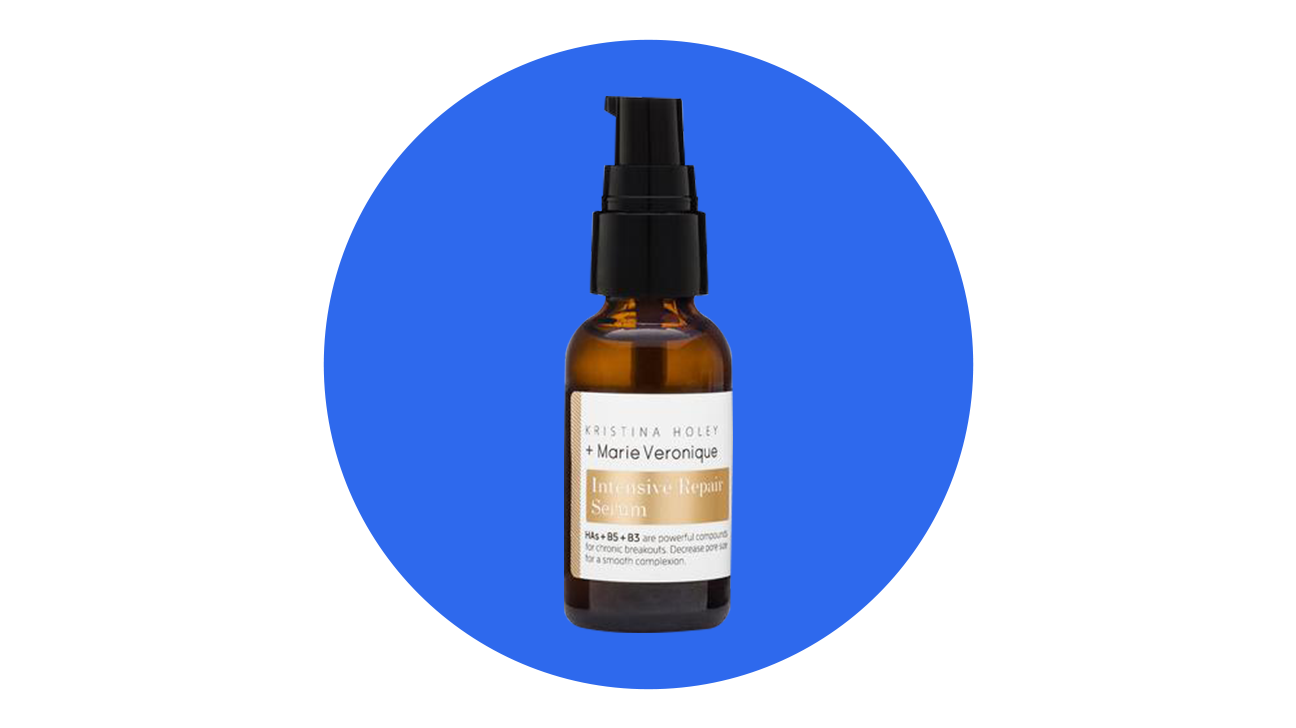
- Price: $$$$
- Acne-fighting ingredients: lactic acid, salicylic acid, vitamin B5
- Product type: gel serum
- Prescription: no
- Best for: pimples, blackheads, redness/blotchiness
This gel serum loves to eat up oil without stripping or drying the sh*t out of your skin (oily friends, take note).
It contains AHAs (hi, lactic acid), BHAs (salicylic acid), *and* vitamin B5 (aka panthenol), which is known for helping prevent skin irritation — a MUST when you’re slathering acne-fighting acids all over your face. This combo is ideal for curbing oil production, clearing away dead skin cells, and soothing inflammation.
Your skin may take a bit of time to adjust, but reviewers say they see clearer, smoother, and more balanced skin after two or three uses.
Best over the counter acne treatment
Differin Adapalene Gel 0.1% Acne Treatment

- Price: $
- Acne-fighting ingredients: Adapalene (retinoid)
- Product type: gel
- Prescription: no
- Best for: all acne types
Dr. Angelo Landriscina, board-certified dermatologist, says, “A retinoid is a must in every skin care regimen for acne. And we now have prescription-strength adapalene over the counter from brands like Differin and La Roche-Posay.” That’s right, this fan favorite — also recommended by Chimento — used to be prescription only. WOOT.
It was a pretty big deal when the famous retinoid went OTC. Especially considering the acne-fighting ingredient is FDA-approved for the treatment of acne. Besides being effective, we also like that it’s easy to find at any drugstore in the US of A.
Writer’s review
Google reviewers say that it takes some time to see results, but that patience pays off big time.
I can also confirm this, since this was my go-to during some early acne days. Once my skin adjusted to the formula and did some “purging” (aka when things get worse before they get better), it worked wonders for erasing existing blemishes, preventing new ones, and improving the look of my skin’s texture too.
-Breanna Mona, writer
Best acne treatment cream
La Roche-Posay Effaclar Duo Dual Acne Treatment with Benzoyl Peroxide
- Price: $$
- Acne-fighting ingredients: benzoyl peroxide, lipo-hydroxy acid, silica
- Product type: cream
- Prescription: no
- Best for: blemishes, blackheads and whiteheads
Chimento recommends this noncomedogenic, fast-absorbing cream. The formula is supposed to be nondrying and safe for sensitive skin. We appreciate that it’s also made without fragrance, oil, or parabens.
Remember when we mentioned how benzoyl peroxide is generally safe for most skin types? This lotion has it babes, and it’s formulated to penetrate your pores to blast blemishes.
It also contains lipo-hydroxy acid, a derivative of salicylic acid that has all the same benefits but with less potential for irritation. Plus, it works over time to smooth skin’s texture. Glycerin is also added to moisturize and silica swoops in to absorb excess oil.
Google reviews are overall glowing — especially from oily skin reviewers. A couple point out that it burned their skin type though, which is something to keep in mind if you have sensitive skin.
Best acne treatment for oily skin
Paula’s Choice Skin Perfecting 2% BHA Liquid Exfoliant
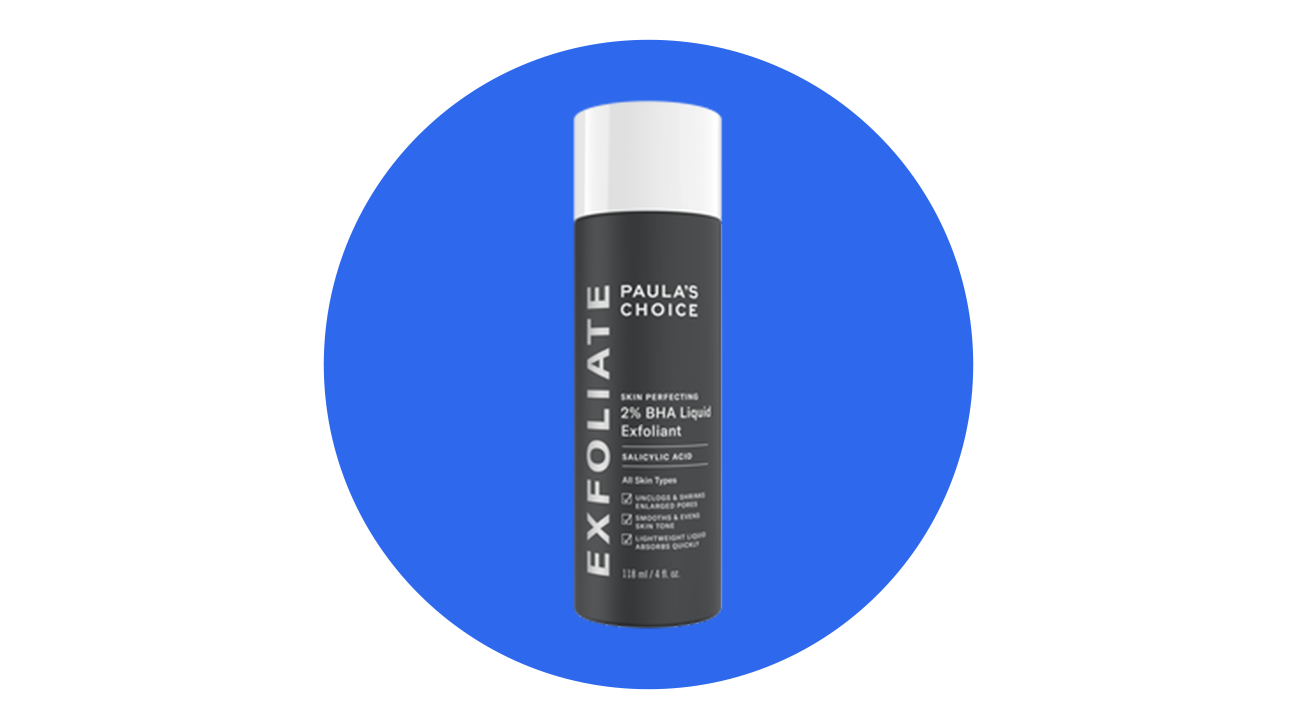
- Price: $$
- Acne-fighting ingredients: salicylic acid
- Product type: liquid
- Prescription: no
- Best for: whiteheads, blackheads, wrinkles, brightening
- Bonus: cruelty-free
This BHA liquid by Paula’s Choice can be used as a toner treatment. It’s a leave-on exfoliant with salicylic acid — a mighty little ingredient known for taking on blackheads and whiteheads. The brand says the salicylic acid works fast to unclogs pores and smooth wrinkles while also brightening and evening out skin’s tone.
Because it’s a liquid, it’s also super lightweight and fast-absorbing too. Google reviewers are in agreement overall, saying it’s effective AF. A smaller number of reviewers disagree about the hype though, finding that it didn’t work for their skin type.
Editor’s review
Until I found this product, I had basically accepted that I would always have breakouts. I’ve always had oily skin, so I figured I would have to deal with acne until my body decided to quit producing so much oil.
I tried EVERYTHING to get rid of them — cleansers, spot treatments, masks, mattifying lotions — but nothing did the trick until I started a regular salicylic acid routine.
I put this stuff on with a little reusable cotton round every morning (and use Paula’s Choice Pore Refining Toner every night before bed) and have been breakout-free for 6 MONTHS.
My skin has been completely pimple-free *and* I’ve noticed my blackheads fade away, too. I am a true stan of this stuff and think everyone with oily skin should give it a shot.
-Ruby Thompson, Market Editor
Best acne treatment for sensitive skin
Makeup Artist’s Choice Mandelic Acid Toner
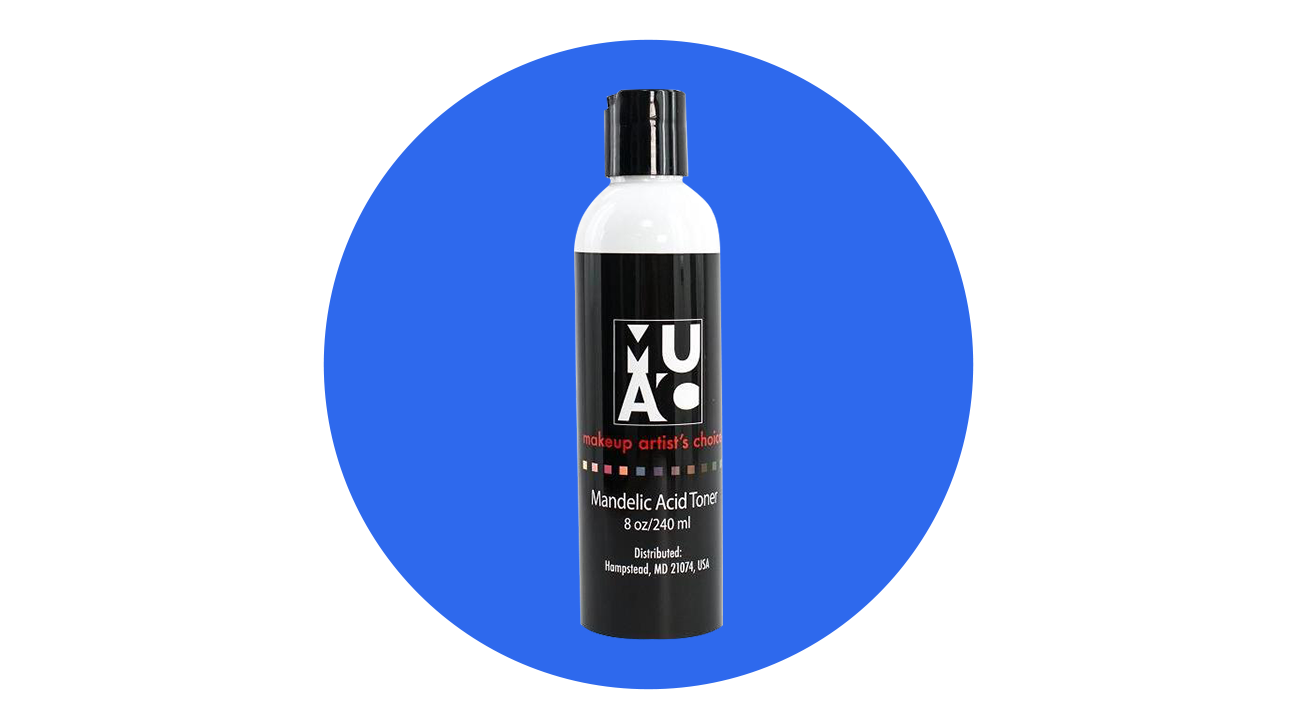
- Price: $
- Acne-fighting ingredients: mandelic acid
- Product type: liquid
- Prescription: no
- Best for: gently addressing inflammatory acne
- Bonus: cruelty-free
Research shows that mandelic acid (an AHA) is just as effective at treating acne as salicylic acid — but that mandelic acid is better at treating inflammatory lesions. It also causes fewer adverse effects.
Basically this pick is a deep cleaning exfoliant that targets acne, shrinks your pores, and boosts the texture of your skin while it’s at it.
The formula also includes green tea extract and aloe leaf extract, which are two soothing, inflammation-reducing antioxidants. This toner is an excellent way to not break the bank, BTW.
Best acne treatment mask
Face Theory Pink Clay AHA Face Mask MK1

- Price: $$
- Acne-fighting ingredients: lactic acid, clay
- Product type: mask
- Prescription: No
- Best for: clearing pores
- Bonus: vegan
A pilot study found that people who used clay masks in conjunction with jojoba oil saw improvement in acne after 6 weeks. This particular bestseller features lactic acid, vitamin C, and pink clay to cleanse pores and promote cell turnover, plus jojoba and argan oils to hydrate.
Using it is easy peasy. Just apply a thin layer and leave it on for 10 minutes before rinsing.
Google reviewers are impressed, saying it’s moisturizing and not drying — like some clay masks are known for doing. We also appreciate that it’s cruelty-free and also free of parabens, silicones, PEGs, SLS, SLES, and mineral oils.
Best acne treatment with niacinamide
Paula’s Choice Niacinamide Booster
- Price: $$$
- Acne-fighting ingredients: niacinamide, salicylic acid
- Product type: serum
- Prescription: no
- Best for: comedonal and moderate inflammatory acne
- Bonus: anti-aging
This serum has one of the baddest boys of skin care: niacinamide. This ingredient can do all kinds of stuff — including reducing acne lesions, curbing oil reduction, reducing inflammation, and hydrating and strengthening your skin’s barrier. It’s also great at smoothing out wrinkles. Hellll yes.
It also has skin soothers like vitamin B5 and licorice root extract, which makes this a great pick for sensitive skin. But because niacinamide is such a powerhouse, it’s really good for any skin type.
Editor’s review
Me again! Shortly after starting my Paula’s Choice BHA liquid exfoliant, I added this Niacinamide Booster to my routine. In just a few weeks, my skin felt and looked *so* much healthier.
Niacinamide’s anti-inflammatory, hydrating, and skin barrier-strengthening properties were immediately obvious. Even though the salicylic acid toner works wonders for clearing and preventing breakouts, adding this booster gave me a second line of defense. It was also a huge help when I was still trying to heal my skin.
I am a big fan of this product. It’s now a permanent staple in my skin care routine.
-Ruby Thompson, Market Editor
Best acne treatment cleanser
Marie Veronique Treatment Cleanser
- Price: $$$
- Acne-fighting ingredients: lactic acid, salicylic acid
- Product type: cleanser
- Prescription: no
- Best for: clearing pores, anti-aging
This cleanser combines AHAs and BHAs to unclog pores, but its formulation is designed to prevent your skin from drying.
We know, we know, we’ve been tooting lactic acid’s horn so much by now. But here, we love that it not only exfoliates, but that it also offers anti-aging perks like boosting natural ceramides production to keep moisture locked in. Plus, the brand says it can help lighten up hyperpigmentation issues we tend to see after acne has cleared.
Best budget acne treatment
The Ordinary Azelaic Acid Suspension 10%
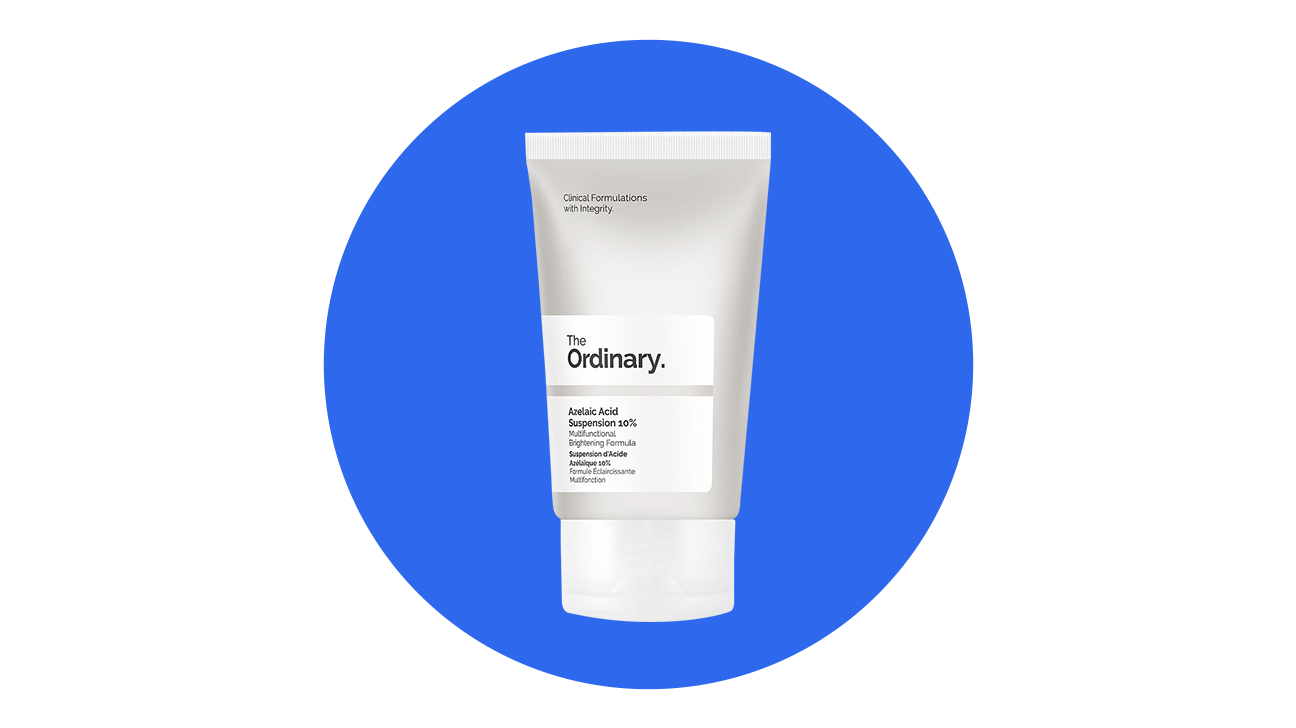
- Price: $
- Acne-fighting ingredients: azelaic acid
- Product type: cream
- Prescription: no
- Best for: all skin types
- Bonus: vegan, cruelty-free, gluten-free
This hot product lives up to the hype: Research suggests azelaic acid is effective at fighting acne and inflammation, and The Ordinary’s affordable product is a suitable option for all skin types. It has a lightweight texture and is fragrance-free. Those dealing with rosacea and acne at the same time might particularly benefit from it.
This pick is also supposed to have serious brightening powers, working to improve the look of dull, uneven tone and texture. We went digging through Google reviews and it was tough to find a negative one. Once we finally spotted one, it pointed out that this formula was too drying — making the reviewer’s face feel too tight.
Also, have you seen its teeny price tag?
Best acne treatment for dry skin
The Ordinary Lactic Acid 10% + HA 2% Exfoliating Serum
- Price: $
- Acne-fighting ingredients: lactic acid
- Product type: serum
- Prescription: no
- Best for: normal, dry, combo, and oily skin types
- Bonus: vegan, cruelty-free, gluten-free
Lactic acid is a more hydrating flavor of the AHA family, and the addition of hyaluronic acid provides extra hydration to balance things out as you remove dead skin cells.
These ingredients — plus superstar hydrator glycerin — can also help address other skin concerns like dullness, fine lines and wrinkles, and uneven texture.
It’s made without alcohol, and it’s free of silicones, which we love. Reviewers adore this serum, saying it’s as effective (if not more!) as more expensive serums. One even calls is ~liquid gold~.
Best acne treatment for back and body
CeraVe Renewing SA Cleanser
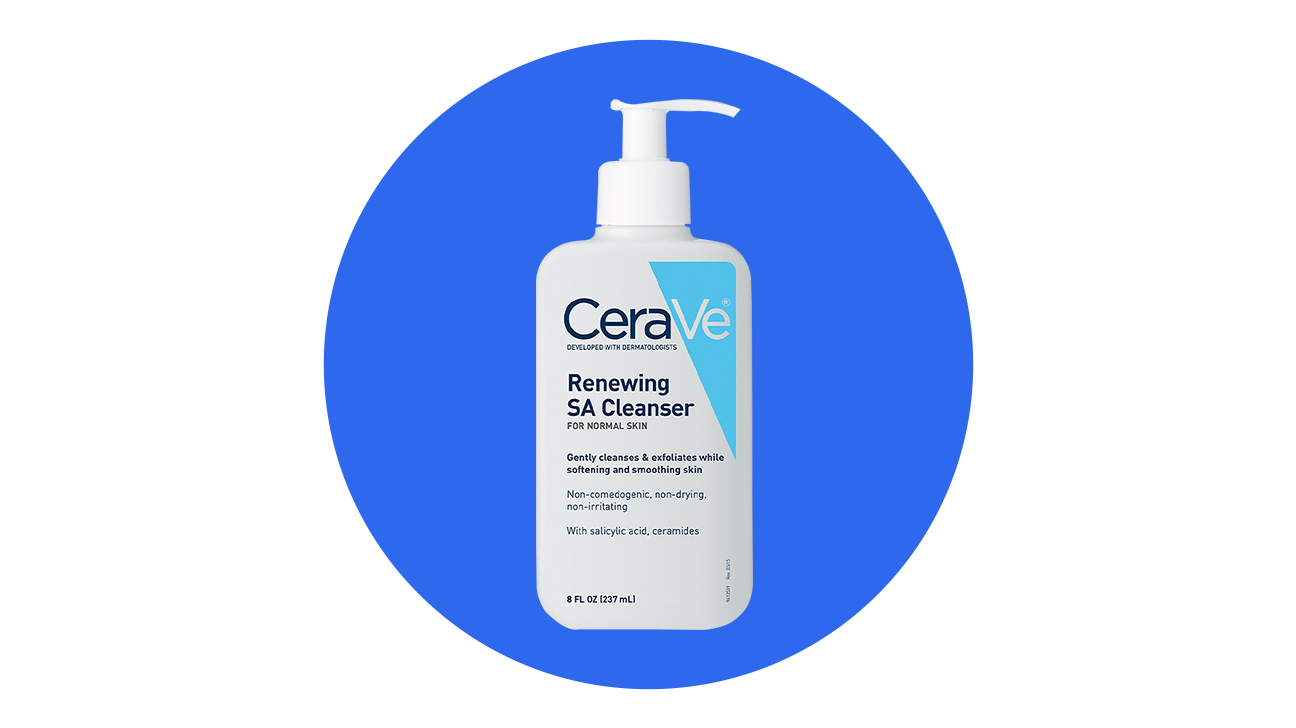
- Price: $
- Acne-fighting ingredients: salicylic acid, niacinamide
- Product type: cleanser
- Prescription: no
- Best for: face and body
- Bonus: cruelty-free
Landriscina likes to have salicylic acid in wash-off formulations like CeraVe’s SA Cleanser. It’s formulated to be used on the face and body, and is supposed to be a pretty sweet pick for people with acne-prone skin.
This nondrying, nonirritating formula provides gentle cleansing and exfoliation while soothing and moisturizing the skin with hyaluronic acid, niacinamide, and ceramides. Quadruple threat much??
Oh, and it’s noncomedogenic and free of fragrance (!!!).
Best spot acne treatment with sulfur
Face Reality Sulfur Spot Treatment
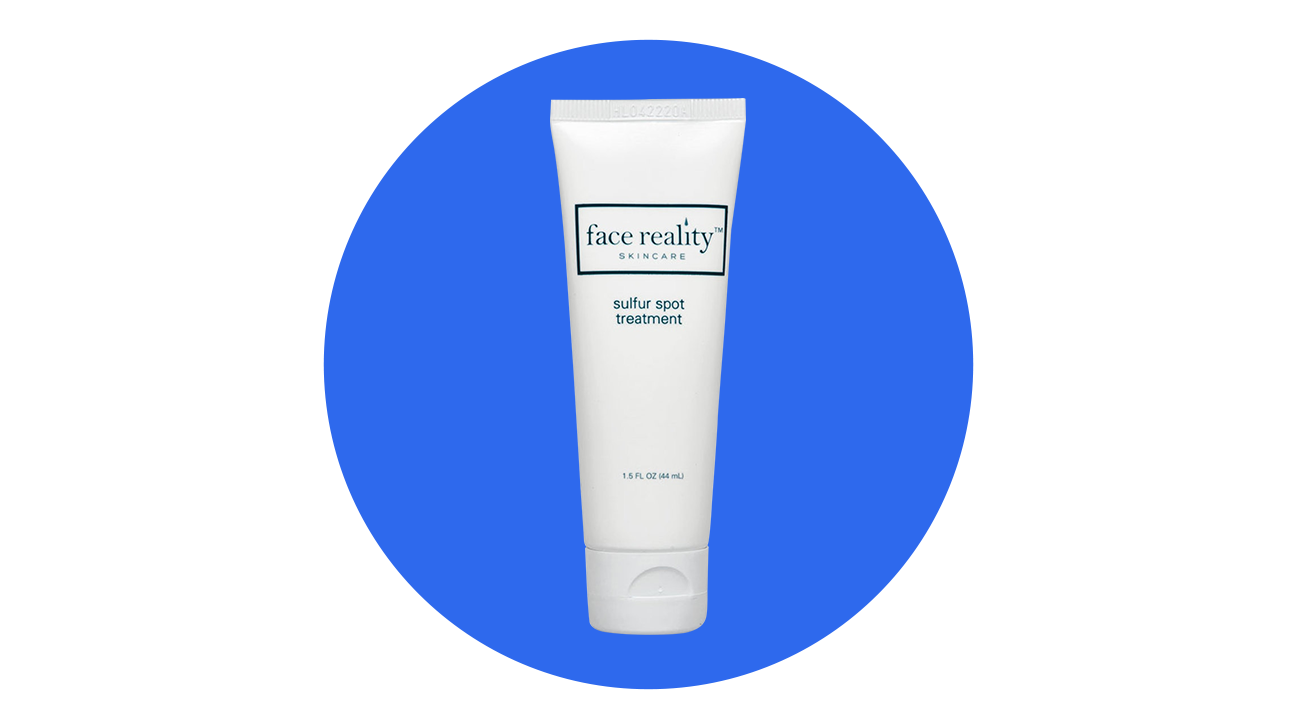
- Price: $$
- Acne-fighting ingredients: sulfur
- Product type: spot treatment
- Prescription: no
- Best for: red, inflammatory acne
This spot treatment promises to calm TF out of acne without bringing a strong odor or leaving dryness behind.
The brand says this pick is good for all skin types, including oily and sensitive. It contains bisabolol and allantoin, two soothing ingredients that help prevent the sulfur from drying you out.
Here’s what you’ll do: Use it by applying a thin layer to inflamed or hella oily areas. The brand says you can also mix it with your fave SPF or face moisturizer for an all-over treatment.
Best spot acne treatment with benzoyl peroxide
Kate Somerville Anti-Bac Acne Clearing Lotion
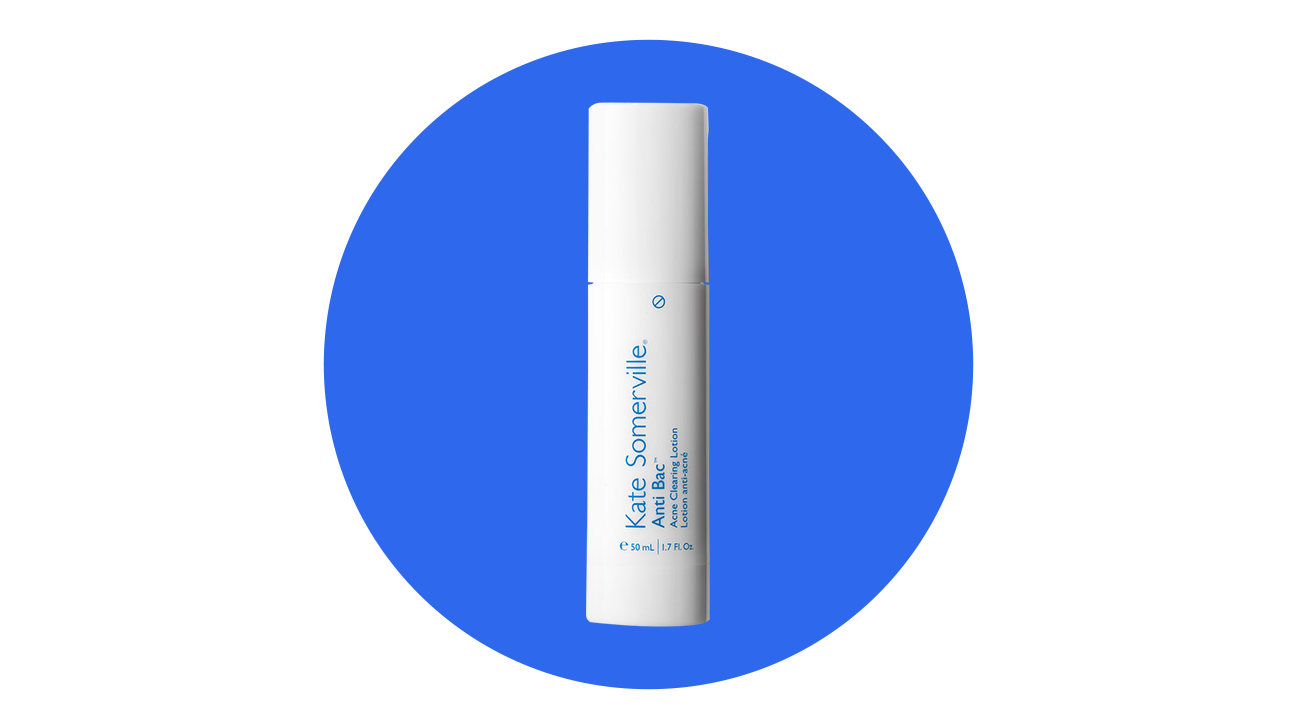
- Price: $$$
- Acne-fighting ingredients: benzoyl peroxide
- Product type: lotion
- Prescription: no
- Best for: oily, combo, normal skin types
This one uses 5 percent benzoyl peroxide to target blemishes head on, making for a pretty strong spot treatment. But for oily and combo-skinned peeps, this can be applied all over to help reduce oil production and prevent new breakouts from forming.
Reviewers say this is suuuper fast acting, flattening pimples STAT. People with normal skin types say using it daily can lead to dryness — so they use it strictly as a spot treatment — but oily-skinned folks say it helps keep breakouts at bay.
Best prescription topical antibiotic acne treatment
Clindamycin
- Price: $20/month, $0 with insurance
- Acne-fighting ingredients: clindamycin
- Product type: gel, lotion, solution
- Prescription: yes
- Best for: inflammatory acne
Clindamycin is a treatment that you need a prescription for. Why? Because it’s an antibiotic that works to bring acne-causing (P. acnes) bacteria to a halt.
Although researchers aren’t 100 percent clear on the details, a 2019 review says that this bacteria brings on the zits for some (but not others), which is why clindamycin is prescribed for some people with acne — it kills off that bacteria.
It’s considered super effective, but like any other prescription, there are some things to consider — like side effects or how it interacts with any other topicals or meds you may be taking. So you’ll need to chat with your derm about that ish first.
If your derm gives you the green light on this one, you can pick this up (with your prescription and whatever costs that come along with it) at most pharmacies like CVS, Walgreens, as well as other prescription platforms like Nurx.
Best prescription retinoid acne treatment
Tazarotene
- Price: $20/month, $0 with insurance
- Acne-fighting ingredients: retinoid
- Product type: gel, lotion, cream
- Prescription: yes
- Best for: moderate and severe inflammatory acne
There are a couple of name brands for this type of topical for treating acne (Fabior, Arazlo, Tazorac, to name a few.) but you should also be able to find it in a generic form. Basically, that active ingredient — tazarotene — is in the retinoid fam, which means it’s the prescription (read: strong) version of retinol (aka, vitamin A).
In fact, this retinoid is THE strongest prescription strength topical vitamin A derivative. This guy is usually considered by derms for treating moderate and severe acne.
The nice thing about the gel version of this prescription is that it may also help out with acne scarring. According to a small 2019 study, Tazorac brand gel was just as helpful at easing the look of pitted acne scars as microneedling.
Again, only your derm knows which meds are right for you and your acne. Plus, you’ll need to go over possible side effects (this one is usually layered with moisturizer, since some side effects are dry skin, burning, itching, and redness).
PSA: Because this is the strongest retinoid you can get your hands on, the side effects (skin irritation, peeling, scaling) can be pretty gruesome. It can also cause severe birth deformities, so it’s not a good option to use during pregnancy.
Writer’s review
I originally started with Differin gel, but “graduated” after my skin adjusted to retinoids, leaving me curious about stronger options.
Now that I switched to Tazarotene, I found my forever treatment. Overall, I think this pick is the best prescription option and I’m practically in love with it. I wasn’t surprised to learn that it’s so effective at treating acne scars, either — I’ve been using it for years and have really noticed a difference.
I tolerate this gel very well when I layer it with my simple facial moisturizer (Vanicream Lotion). Without lotion, it would be too intense and drying, causing redness.
-Breanna Mona, writer
Best acne treatment for teenagers
Hers Custom Acne Treatment for Teens
- Price: $5/month for first 2 months when you start a subscription, or one-time purchase of $19
- Acne-fighting ingredients: custom
- Product type: customized based on skin and acne type
- Prescription: yes
- Best for: all acne types
OFC, acne is pretty much a right of passage for teenage years. If you prefer to get something custom for your skin and acne types, you can check out Hers — a telehealth company selling OTC meds, prescriptions, and other products.
Here is how it works: People under 18 get consent from a guardian to chat with one of Hers experts, addressing their specific skin concerns and goals.
Based on those convos, you’ll receive a custom formula (right at your doorstep) made just for you. It could include tretinoin, clindamycin, azelaic acid, zinc pyrithione, niacinamide — you name it.
Just keep in mind that this is a subscription service, which can be costly. You might be able to find the same ingredients in more affordable options elsewhere, too.
Best acne treatment for skin prone to scarring
Starface Hydro-Stars
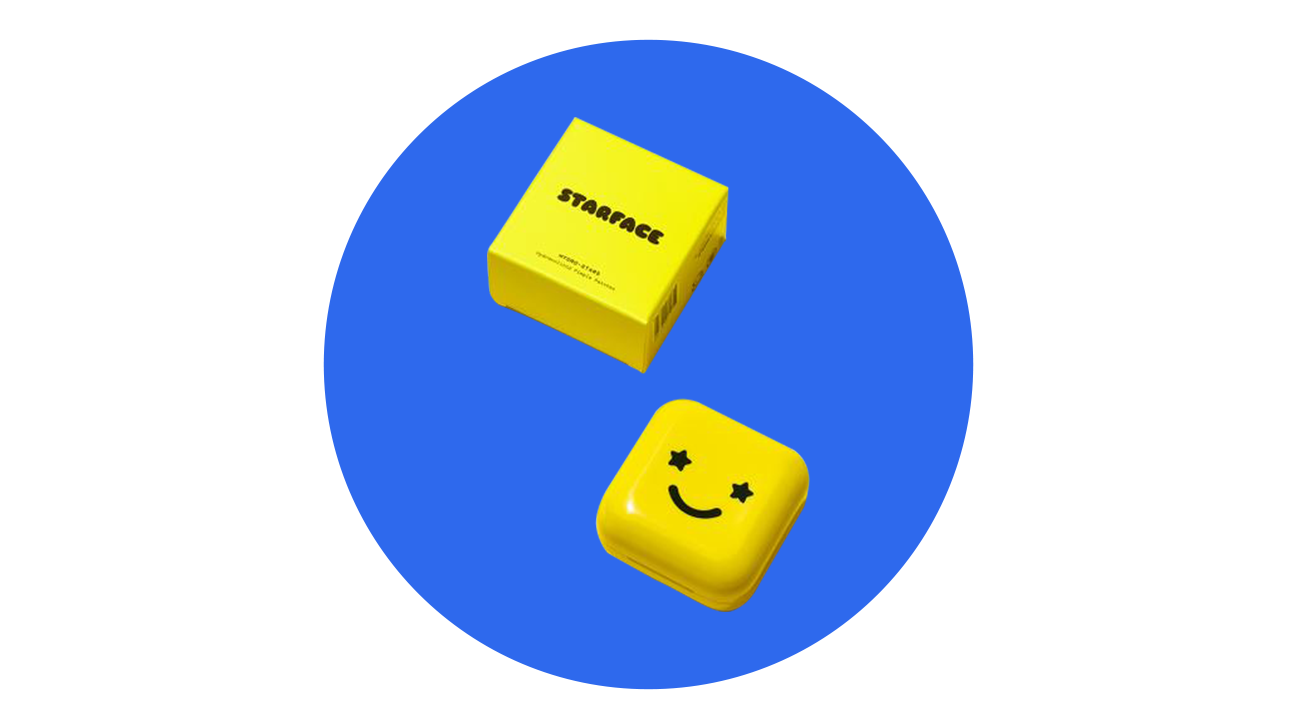
- Price: $
- Acne-fighting ingredients: hydrocolloid
- Product type: stickers
- Prescription: no
- Best for: protecting blemishes
- Bonus: vegan
Hydrocolloid patches protect the spot from additional irritation while removing any excess fluid. The only ingredient in these adorable patches is hydrocolloid, so they’ll do their job to shrink whiteheads without causing any irritation.
Most Google reviewers are convinced these stickers are cute and effective. Of course, some disagree, saying they didn’t notice these working for their skin.
Best drugstore acne treatment
CeraVe Resurfacing Retinol Serum
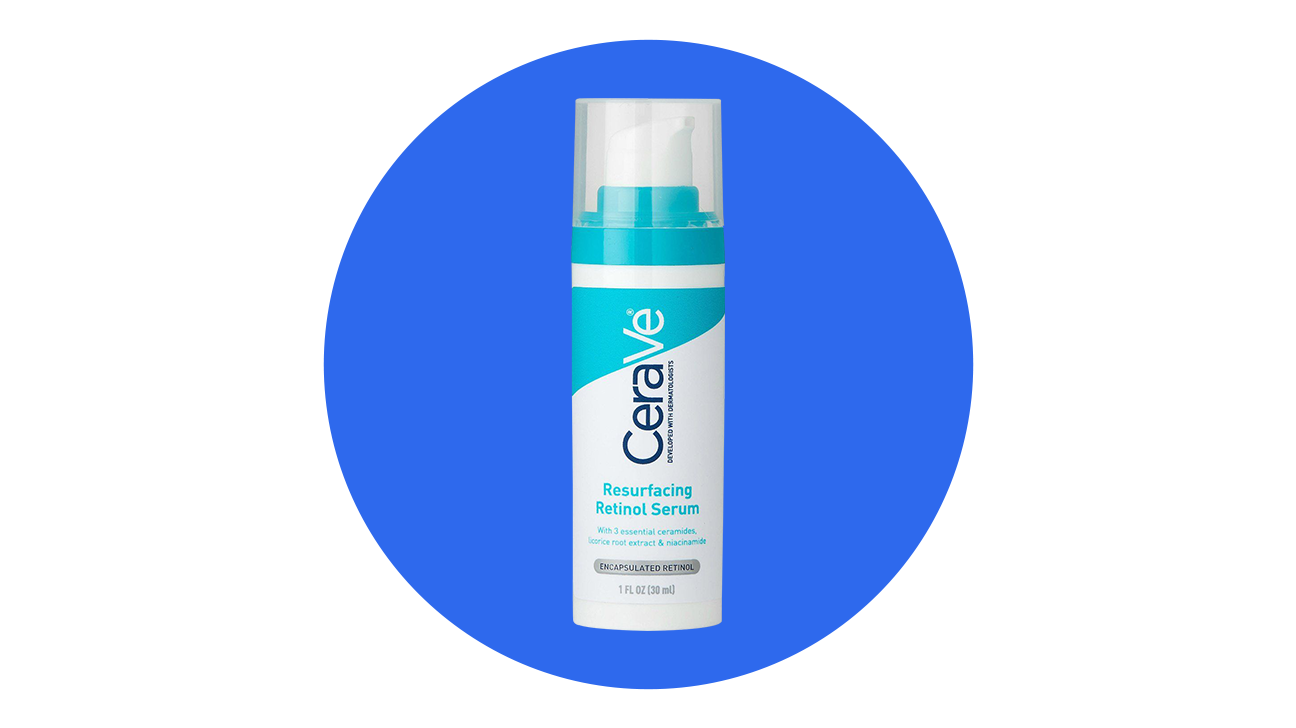
- Price: $$
- Acne-fighting ingredients: retinol, niacinamide
- Product type: serum
- Prescription: no
- Best for: new retinol users, sensitive skin
- Bonus: cruelty-free
Retinol and niacinamide work together to fight long-term acne in this gentle formula from CeraVe. It’s a top choice if you’re new to retinol because of its encapsulated formula. Encapsulated retinol is especially good for people with sensitive skin due to its improved ingredient stability and delivery.
We love that this formula is also noncomedogenic and that the majority of Google reviewers love it. They mention it working for their sensitive skin types and one pointed out how it worked for their breakouts as well as hyperpigmentation.
How to use acne treatments
When it comes to your skin care routine, Chimento says you don’t need to make it too complicated to see results. She gave us the when, the what, and the how for applying your acne treatment and other lotions and potions too.
When to apply
According to Chimento, you can apply your acne treatment after your initial cleansing but before moisturizing. This can be about twice a day — once when you wake up and again before bed. (But read your product’s label carefully for specifics.)
How to apply
Getting acne under control requires an entire skin care routine — not just acne treatments. Here’s what yours should look like (for the most part):
- It’s best to start with your cleanser so that your skin is primed and ready to absorb the products you put on it, Chimento explains.
- Then, you can use your toner — Chimento suggests one that’s filled with either BHAs or AHAs so you can unclog those pores, prevent breakouts, and blast blackheads over time.
- Then she says you can apply serums (which is essentially just applying highly concentrated nutrients and antioxidants to hydrate your skin and amplify its health) and eye creams.
- Ding ding! Time to apply your acne treatments.
- Finish with your fave moisturizer and sunscreen during the day, switching it out for retinol at night.
PSST. There is no “one-size” anything, including skin care. But a good routine is crucial and we have more tea on how to build your routine right here in this guide.
Tips and tricks for treating your acne
Be patient
Landriscina warns that you may have a long wait to see results from acne products. “I always tell my patients that you need to give a regimen 6 weeks to START to see results,” he says, noting that some products can take up to 12 weeks.
Keep it simple
Don’t try everything at once. Keep your acne-fighting regimen to one or two products rather than a whole line — especially with products that contain AHAs and BHAs.
The same goes for facewashing. “Another common mistake is feeling like your skin care needs to be extra harsh or that you have to scrub your face — overcleansing and harsh scrubs can actually make acne worse,” says Landriscina. “You are not dirty.”
Don’t pop ‘em
We know it’s so tempting, but you’ll thank yourself later. You can bet squeezing and popping will only make things worse and ultimately lead to scarring.
See your derm if you can
Remember that at-home treatments are not a replacement for expert care. Landriscina stresses that people with acne should see a dermatologist for their acne at least once. “Many conditions like rosacea, perioral dermatitis, and malassezia folliculitis can look like acne to the untrained eye. Without the correct diagnosis, it will be hard to find relief.”
Plus, a dermatologist can help you figure out your skin type and then recommend the right ingredient. You don’t want your skin to be a testing ground! Leave that to the clinical trials.
Patch test
Always use caution when adding new actives and proven ingredients to your routine. The best practice is to perform a little patch test on yourself before using your new acne treatment. This will help you avoid an allergic reaction and to make sure your pick isn’t too intense for your skin type. Ultimately, if you treat your skin kindly, you’ll be glowing sooner than you think.
Our process and why you should trust us
We consulted with two dermatologists to get tips for choosing the best acne treatments for different skin types and concerns. We used those tips to pick the products above.
Before writing about those products, we put them all through a thorough vetting process that checks for unsupported health claims (like “This acne treatment gets rid of breakouts in one use!”), shady business practices, and lawsuits concerning a company’s products. We also checked that the main ingredients in each product are evidence-based and actually do what the company says they do.
After wrapping up our recommendations and tips, we sent this entire article to a third medical professional specializing in dermatology (in this case, Clare Wightman MS, PAC) for review.
So basically, you can feel good knowing that we put in WORK to get you these recommendations.
from Greatist Health RSS Feed https://bit.ly/33mskoi

No comments:
Post a Comment